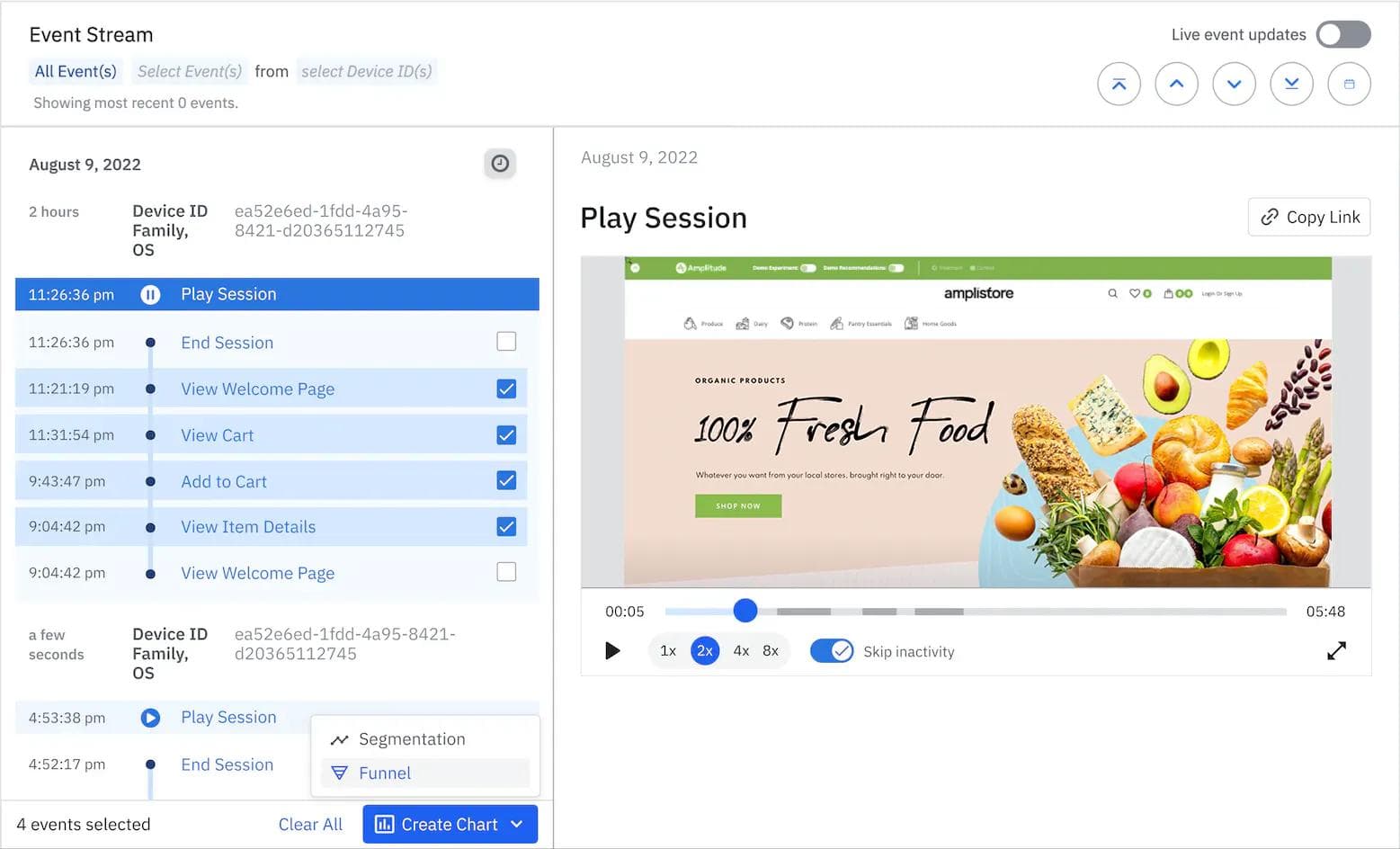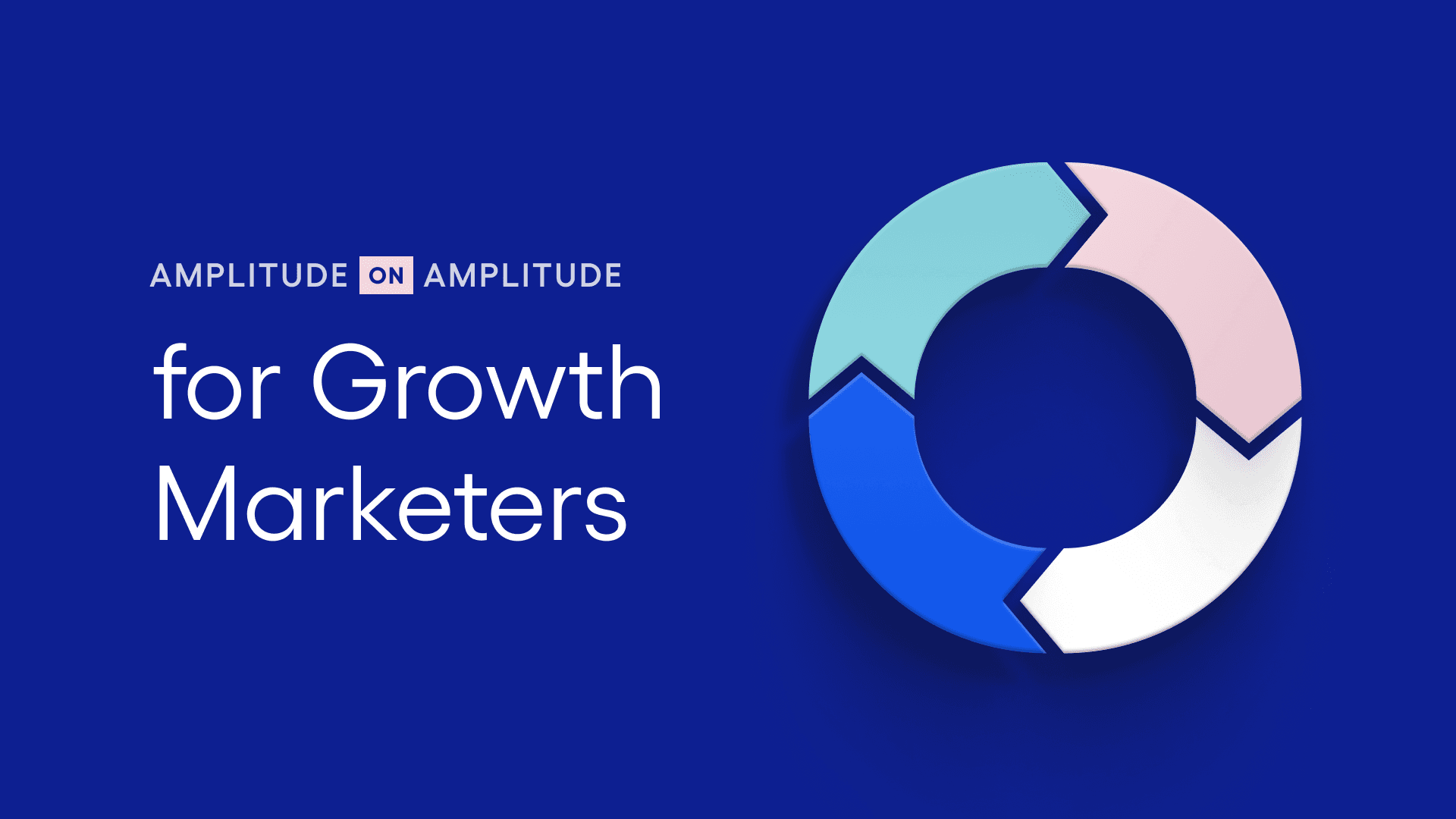How Amplitude Uses Amplitude to Move Users from Sign-Up to Monetization
Learn how the Amplitude growth team uses Amplitude to fuel our customer journey and drive engagement and monetization.
This post is part three of a four-part Amplitude on Amplitude for Growth Marketers blog series.
Marketing channels are saturated, and individuals today are simultaneously hit with many different messages across devices. So whether you’re using paid ads, organic, or even an owned channel like email, your message is just one of many.
Selecting the right type and timing for your marketing messages is essential to cut through the noise—and requires a solid understanding of your audience. To do so, the best marketers dig into behavioral data to understand not only what customers do when interacting with a product or site but also why and how.
As a growth marketer at Amplitude, my primary focus is monetization—how our platform generates revenue. In this post, I’ll share how my team uses the Amplitude platform to encourage customers to increase their engagement across our website and product to expand their current and future usage and spending with us.
Key takeaways
- Amplitude’s growth marketing team uses the Amplitude platform to track and analyze user actions on our site and product to guide them from initial sign-up to monetization.
- The growth team works closely with the product team, using insights from Amplitude to create a unified messaging strategy across various channels.
- Using Amplitude's segmentation capabilities, we tailor our marketing efforts to specific user groups, considering factors like job function and industry for more precise and effective campaigns.
- Our targeted approach using Amplitude’s cohort analysis to promote our self-serve plan led to a noticeable increase in plan adoption, demonstrating the effectiveness of our data-driven strategy.
- We constantly adjust our marketing strategies based on user behavior, enabling rapid, effective changes that engage our audience.
Sending the right messages at the right time
Lifecycle marketing involves moving customers through milestones—like sign-up, activation, engagement, and monetization—by understanding and responding to their needs and behaviors at each point in time. The Amplitude platform helps us understand where users are on their product journey and what information they need to reach the next step.
Amplitude enables us to see which journey milestones customers have reached based on actions they have or haven’t taken. For instance, at the start of a new customer’s journey with Amplitude, we look at things like: Have they engaged with the free demo on our website? Have they completed activation after signing up for a free account?
The marketing and product teams collaborate to send in-app and external messages to guide customers to the next stage. Collaborating closely with our product counterparts is a game changer when creating a cohesive customer experience.
Let’s say we run a campaign encouraging more customers to move from sign-up to activation. We create the campaign with cohorts—aka groups of users who share behavioral traits. As customers take the individual steps that lead to activation, we’ll send them personalized emails and in-product guidance to direct them to the next step.
Imagine one of our customers looked at how to send their data into Amplitude using a software development kit (SDK) but never sent it. They might need more documentation about that process, which we can deliver in-app or via email at just the right time to get them back on track.
We also use behavioral cohorts to monitor activation across our different user groups. If we see abnormalities, we can use Session Replay to see what specific users were doing before or after completing a step in their activation journey, giving my team a 360º view of the user experience to iterate campaigns quickly.

Session replay in Amplitude helps you to dig into specific user journeys.
Tailoring marketing campaigns to optimal audience cohorts
We use segmentation and funnel analysis in Amplitude to better understand different groups of users so we can personalize our marketing efforts. Aside from where they are in their product journey, users have different job functions, operate in distinct industries, work for companies of varying sizes, and have different levels of technical knowledge. Identifying these factors enables us to better understand our customers so we can market directly to their needs.
For example, using data from Amplitude, the growth marketing team ran a personalized campaign to support the launch of our new self-serve plan. This new plan bridges the gap between our free and bigger enterprise plans. Designed to serve startups and small teams (SMBs), this plan is perfect for organizations looking to get more out of Amplitude but not yet ready for our established plans. Though the plan is available to everyone, we wanted to focus our marketing efforts on the users who would get the most out of its features.
We used Amplitude to build a cohort to determine who we’d target with the campaign. It helped us narrow down the most important factors, like current Starter plan usage, the amount of data they have in Amplitude, and previous engagement with marketing and sales.

Build user cohorts in Amplitude based on actions customers have taken within a specific period.
The primary channels we used for the campaign included product ads and email. We identified their most important value drivers by digging further into the target cohort’s behavior. In the campaign, we emphasized those value drivers and directed the audience to documentation and resources to help them better understand those points.
As a result, when those customers were ready to buy, they didn’t have to talk to a salesperson—they already had all the information they needed to confidently make their decision. We saw that our cohort targeting worked throughout the campaign. There was a clear spike in the number of self-serve plan purchases on the days we sent out personalized emails.
My personalization top tips
Be selective. The goal is to drive meaningful personalization, not fill your system with noise. Identify the most important information you need to collect to effectively personalize campaigns. The best data will drive the desired actions but won’t be so complicated it will break your system. Remember that personalization is a fine line. Messages should be relevant to customers without feeling invasive.
Foster engagement. We’ve found that emails that look like they come from a real person get better engagement than generic brand emails. To keep the interaction authentic, we ensure that any recipient who replies to these emails is directed to an actual person. This strategy ensures that while the initial contact is automated, any subsequent interaction is genuinely responsive and personal.
Get additional personalization tips in our Guide to Personalization at Scale.
Move quickly with Amplitude
As a growth marketer in a highly saturated and fast-moving market, time is money. So, I need insights and capabilities to iterate on our strategy and messaging quickly and confidently—and using the Amplitude platform, I can do just that.
At Amplitude, our team is essentially in a constant state of experimentation—we adjust and adapt campaigns based on how customers respond. We couldn’t do that if we were waiting on answers from our data team—and we think you shouldn’t have to wait, either. The self-serve nature of the Amplitude platform enables you to pull the information you need to make intelligent marketing decisions—no Python or SQL required.
Ready to try it out yourself? Get started today with a free Amplitude account, or learn more about how Amplitude supports growth marketers.

Carmen DeCouto
Group Product Marketing Manager, Amplitude
Carmen DeCouto is a Product Marketing Manager at Amplitude, passionate about helping digital businesses connect data to growth. Before joining product marketing, she led a growth team focused on monetization lifecycle and startup programs—bridging the gap between user activation, engagement, and revenue.
More from Carmen




